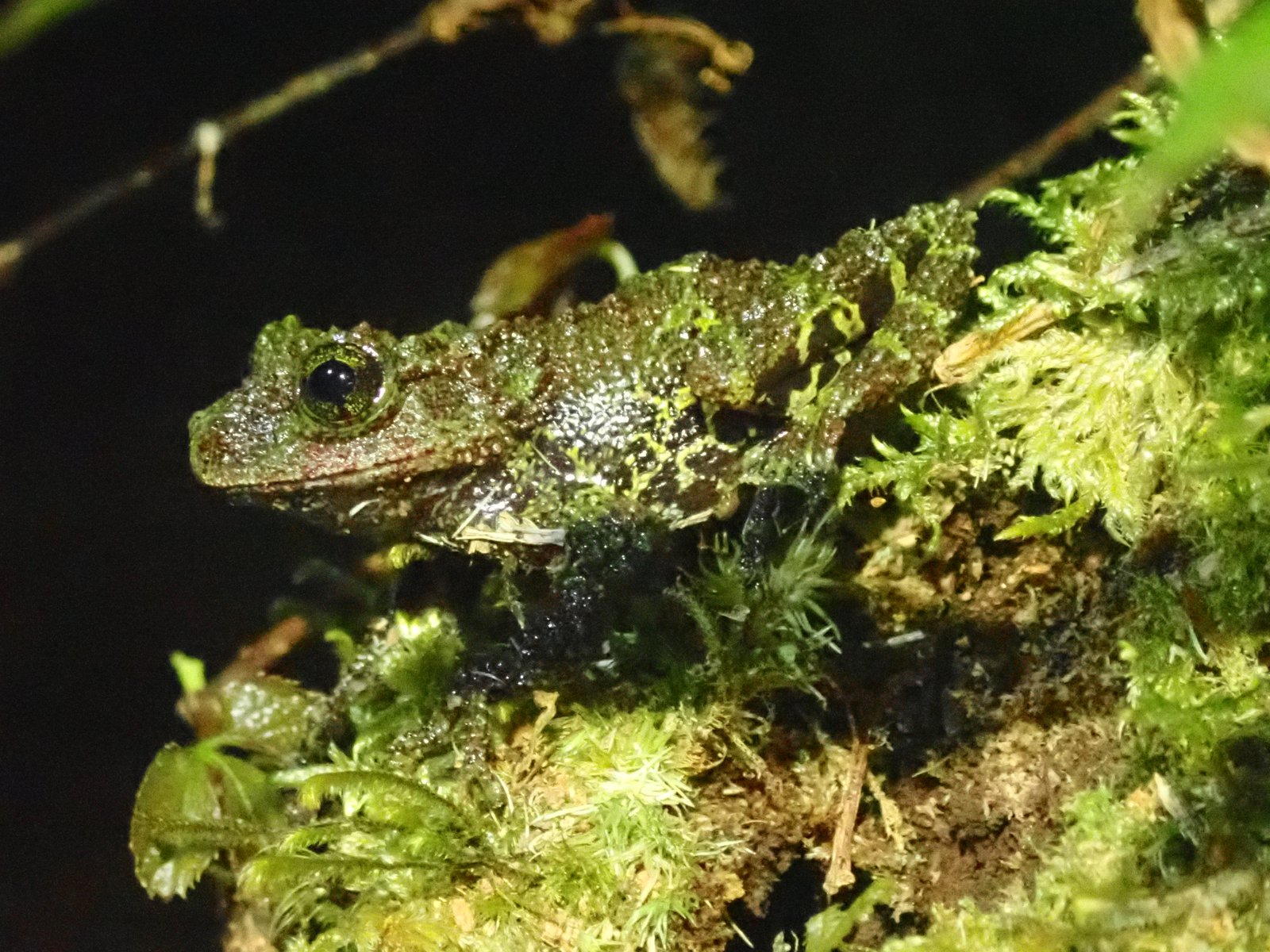Climbing in the clouds: searching for Vietnam’s rarest frogs

© Australian Museum
I recently completed an expedition with international colleagues in search of Sterling’s Toothed Toad (Oreolalax sterlingae) and Botsford’s Leaf Litter Frog (Leptolalax botsfordi) in northern Vietnam. These two Critically Endangered species are known only from high up on Mount Fansipan, Indochina’s tallest mountain. Unfortunately for these frogs, there is now a lot of tourist activity and development close to the summit of Mount Fansipan and this is likely to be detrimental to the amphibians found there. We are therefore hoping to find the frogs elsewhere- somewhere less disturbed that may provide insurance against population decline associated with habitat degradation on Mount Fansipan and help to safeguard the futures of these two species.

© Australian Museum
It is difficult to narrow down a search site for two tiny frog species that we still know so little about, but during our recent expedition, we focused on nearby mountains where satellite imagery appeared to show high quality forest habitat at the appropriate elevation. The mountaintop selected had never previously been surveyed for amphibians, and finding either species here would help us to learn more about their distribution and inform subsequent conservation management plans.
The survey commenced with six hours of hiking. After the strenuous trek, our mountain accommodation for the first night was a small wooden hut surrounded by a cardamom plantation at about 2000 metres elevation. The hut was right next to a large stream that was to be the site of our first survey. We waited for night fall and then walked up the rocks of the stream, scanning with our head torches for any frogs. Here we found some amazing frogs, including an Ailao Moustache Toad (Leptobrachium ailaonicum) with scars from fighting rival males using the spines on its upper lip, and the aptly named Chapa Moss Frog (Theloderma bicolor), an Endangered species with incredible camouflage! But we’d have to climb even higher to find somewhere suitable for our two target species.
After a very long and steep climb on the second day, we reached a stream closer to the summit. The undisturbed forest at this elevation seemed a world away from the rice fields where we had started our hike, with every surface covered in moss and the air completely shrouded in mist. In the stream, one of our team found several tadpoles that looked similar to those of Sterling’s Toothed Toad, but identifying this individual will mean taking a closer look at its physical characters and DNA.

© Chris Portway
It was an unforgettable experience encountering some of northern Vietnam’s amphibian diversity and helping to survey a poorly known region that is severely threatened by habitat loss. This expedition is just one of many conducted by the team in the Hoang Lien Range, each helping better understand, and hopefully conserve, the unique amphibians of the region.
Christopher Portway
Research Assistant, Herpetology, AMRI
Acknowledgements
This expedition was part of an Ocean Park Conservation Foundation funded project to understand and protect the amphibians of the Hoang Lien Range. The project is a collaboration with the Zoological Society of London, Paignton Zoo, the Asian Turtle Program, Indo Myanmar Conservation and the Center for Rescue and Conservation of Organism (Hoang Lien National Park). Thank you to all who made this work possible.













